Explore the wornder colorful world of birds outside your window.
Ireland has many beatufil bird species. Quite a lot of these can be observed in Irish gardens.
Discover the most common Irish garden birds and facts about them.
This post contains affiliate links. If you click on one of them, we might receive a small commission (at no extra cost to you). Thanks for your support!
Table of Contents
- 1 Irish Garden Birds Identification
- 2 Garden Bird Identifier
- 3 Common Garden Birds Ireland
- 4 Robins in Ireland
- 5 Blackbirds in Ireland
- 6 Blue Tit Ireland
- 7 Great Tit in Ireland
- 8 Coal Tit in Ireland
- 9 Chaffinch Ireland
- 10 Goldfinch Ireland
- 11 Pied Wagtail Ireland
- 12 Wren Ireland
- 13 Rare Garden Birds Ireland – Species under Threat
- 14 Native Birds of Ireland
Irish Garden Birds Identification
One of the best ways to get interested in birds is by simply observing the feathered visitors in your garden. Getting to know and identify birds in gardens is an enjoyable pastime. It will also help you keep more in touch with the seasonal changes to birds and gardens around us.
Irish garden birds can be observed throughout the year. During the colder months of the year establishing a bird feeder will attract more birds to your garden. This is a great way to learn to identify some of the most common birds in Ireland, and also some of the rare ones too!

Tip: If you do decide to place a feeder in your garden during winter and early spring, take care to keep it topped up and don’t suddenly stop feeding the birds as they learn to rely on this source of food.
If you would like to get better at identifying some of the native Irish birds and migratory visitors, it is worth considering buying a pair of binoculars which will help you pick out great detail in the markings.
Garden Bird Identifier
There are plenty of books (as well as several apps) on the subject of bird watching in Ireland. If you plan to shop for garden birds Ireland book for yourself or intend to give one as a gift, consider “The Pocket Guide to the Common Birds of Ireland”, by the best selling authors Eric Dempsey and Michael O’Clery is a good place to start.
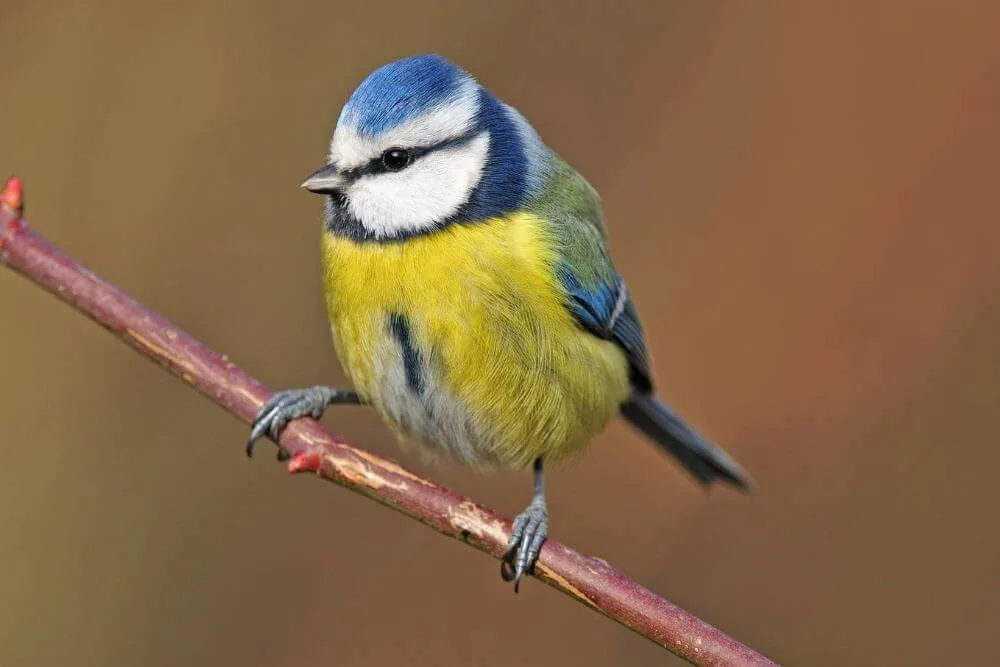
Irish Birds List – Typical Garden Birds
The following is a list of 30 Irish garden birds:
- Robin
- Blackbird
- Blue Tit
- Great Tit
- Coal Tit
- Chaffinch
- Goldfinch
- Greenfinch
- Bullfinch
- Pied Wagtail
- Long-tailed Tit
- Linnet
- House sparrow
- Starling
- Wren
- Goldcrest
- Dunnock
- Blackcap
- Song Thrush
- Mistle Thrush
- Siskin
- Redpoll
- Collared Dove
- Feral Pigeon
- Wood Pigeon
- Woodpigeon
- Jackdaw
- Hooded Crow
- Rook
- Sparrow hawk
Common Garden Birds Ireland
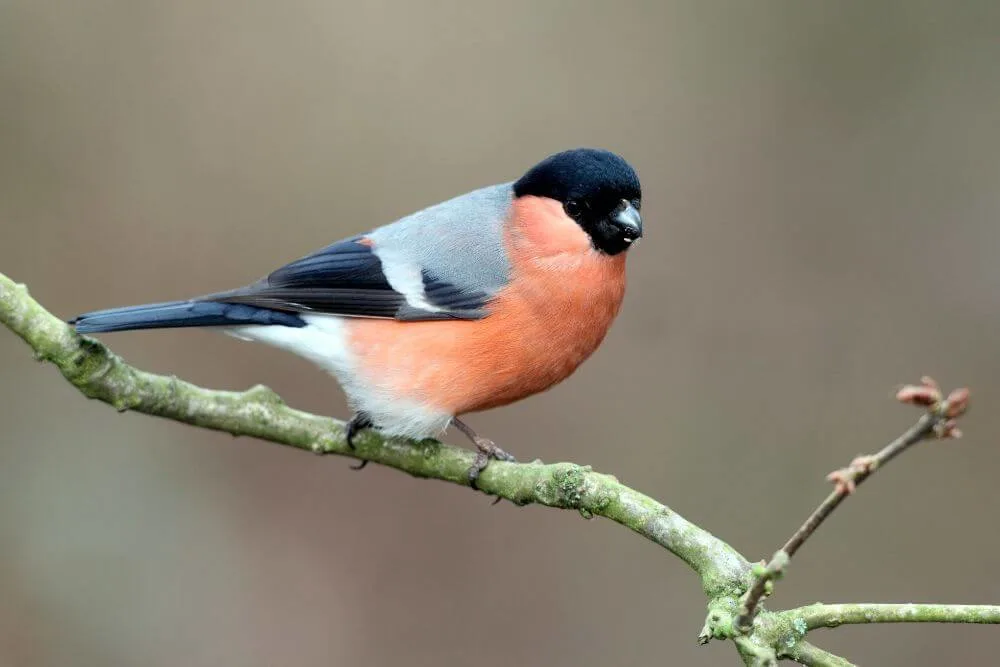
The following species are common Irish garden birds with Irish bird names. These species are found all over Ireland, but in some areas are more abundant than others. How many do you know?
Small Birds Ireland
Some of the small Irish garden birds that are include the Robin, Chaffinch, Goldfinch, Chaffinch, Blue Tit, Great Tit, Coal Tit, Dunnock and Pied Wagtail.
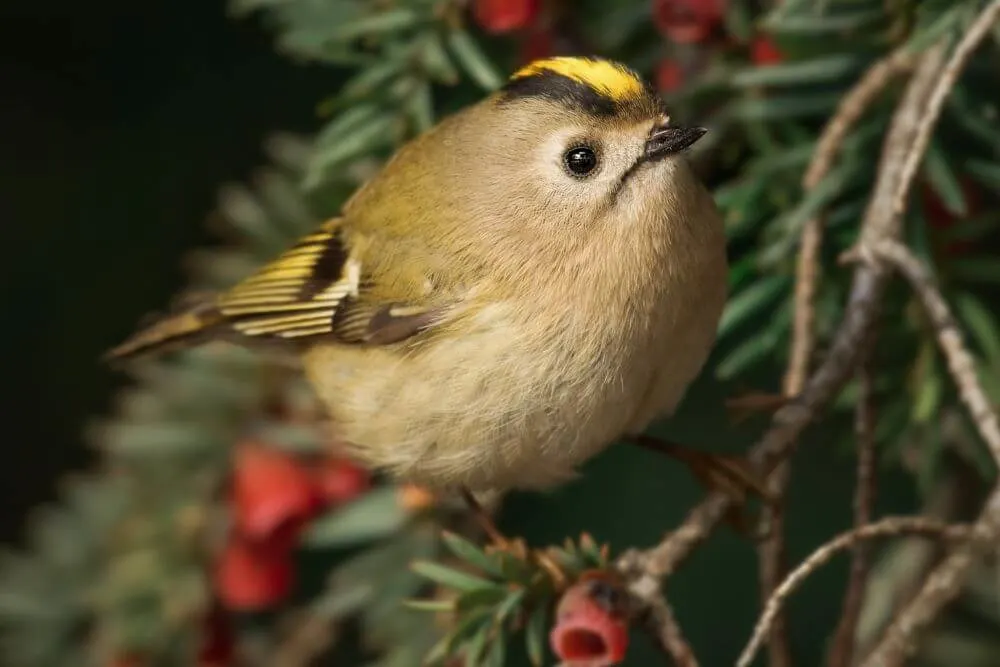
Small Irish Birds Fact: The Goldcrest is the smallest of all Irish birds. It is similar in size to the similarly named Firecrest. The Wren is Ireland’s third smallest bird.
Robins in Ireland
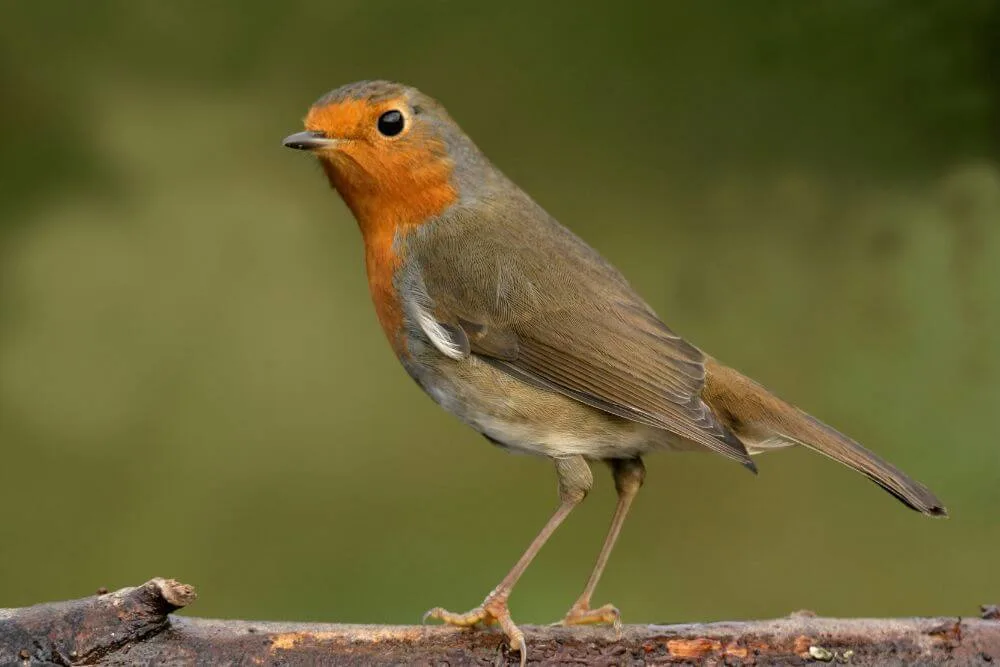
Common Name: Robin
Irish Name: Spideog
Latin Name: Erithacus rubecula
Conservation Status: Green
The Robin, also known as the Robin Redbreast, is probably one of the most well known of all garden birds in Ireland. Its inquisitive nature and colorful plumage makes this little bird a favorite among Irish songbirds.
What do Robins look like?
Adult European Robins are brown and have distinctive red markings on their upper breast and white on the lower belly. Juvenile Robins are brown in color and only gain their red markings later. They can be sometimes mistaken for a Dunnock.
Male vs Female Robins – What is the difference?
Both male and female robins look very similar so it can be hard to tell them apart. As well as being slightly smaller than males, female European Robins tend to be a little darker brown in color, with lighter orange-red markings on their breast in comparison to the more solid color of the male robin.
What do Robins eat?
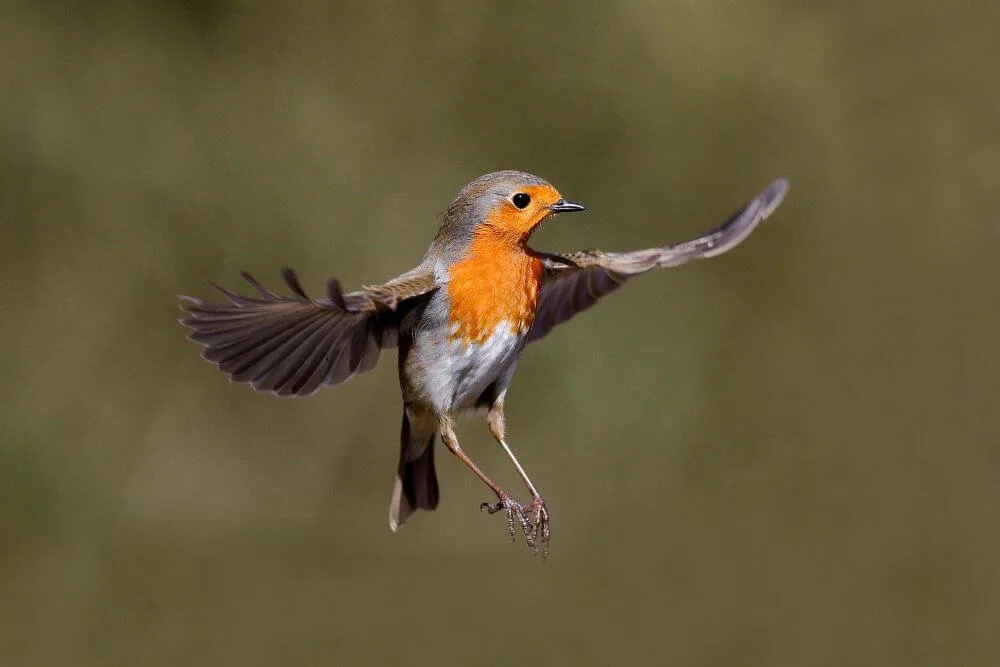
The diet of the Robin consists mainly of insects. Their pointed beak is well suited to catching these small prey.
In Irish gardens, Robins are often seen flitting around, especially if some garden work is being carried out. Unlike the European Robins on the continent, Robins in Ireland and Britain are not particularly shy of humans and will avail of an opportunity to feed, if the soil is disturbed.
Do Robins mate for life?
No, European Robins do not mate for life. New pairs are formed at the beginning of each breeding season.
Where do Robins nest?
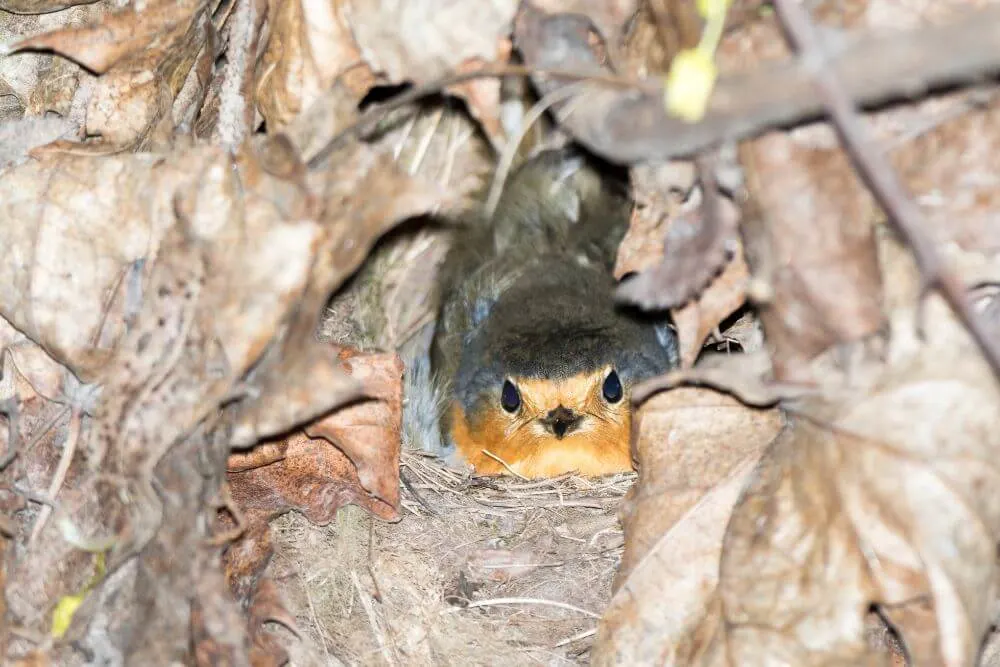
Females build the nests by themselves. Nests are usually found close to the ground in trees, shrubs, bushes, hedgerows, or other small cavities and hidden nooks such as nest boxes, old boots and flower posts.
Robins are very sensitive to disturbance during the breeding period, so if you do discover a Robins nest, it is best not to touch or disturb it in any way and give the birds some space.
How many eggs does a Robin lay?
Each summer they have two clutches of up to six eggs. The eggs are incubated for about 13 days and the chicks require a further 14 days after hatching until they are fully fledged. During this time both the makes and female provide the chicks with food.
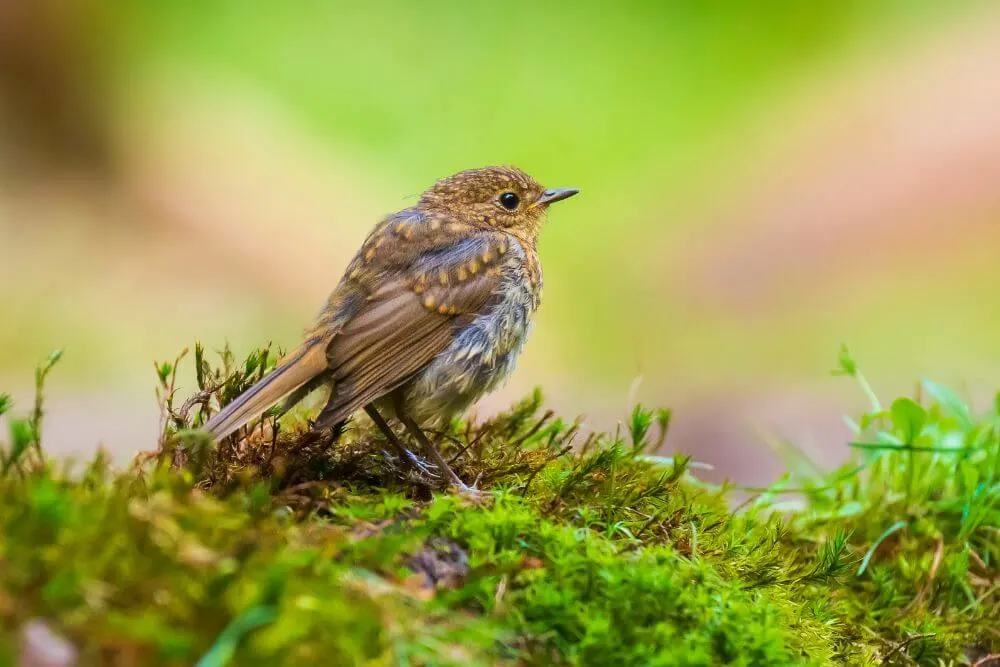
Robin Lifespan
Robins typically live to be about two years old in the wild. As with many bird species, there is a high rate of mortality in the first year, so if a robin can survive this period it may have a longer life expectancy.
Robin Facts
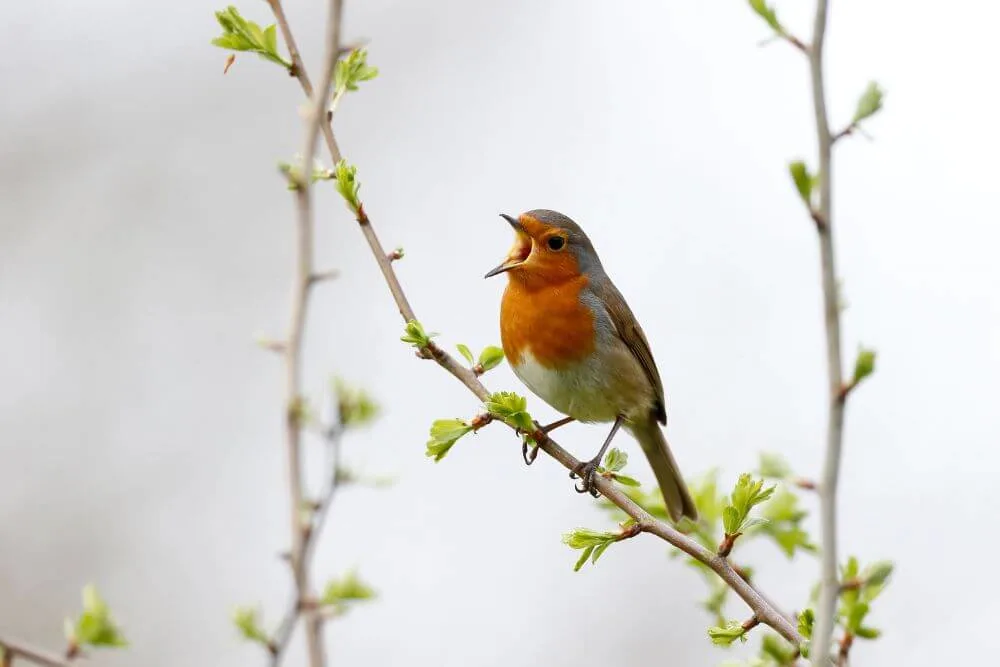
- These native Irish birds are seen throughout much of the year, although they tend to be less noticeable during the summer because they undergo a full molt of their feathers after the breeding season so they are more inconspicuous.
- Robins are fiercely territorial and will strongly defend their territory to control against intruders. These small birds have also been known to attack red objects in a garden, such as clothes or their own reflection.
- Male Robins stay in Ireland during the winter to defend their territory, while the females, who are smaller in size and have less fat reserves, tend to fly to warmer climates, such as France.
- The Robin is one of the first birds to start singing the dawn chorus in the mornings. Occasionally, Robins can be heard singing at night in cities. This “False Dawn” is thought to be due to light pollution that upsets their usual rhythms.
- Did you know? Ever wonder why Robins are associated with Christmas, and Christmas Cards in particular? Legend has it that this dates back to the postal service in Victorian Britain when the uniforms of postmen were bright red, earning them the nickname of “Robins” or “Red breasts“. The tradition of sending Christmas cards became popular around the 19th century this time and the association supposedly developed.
Blackbirds in Ireland
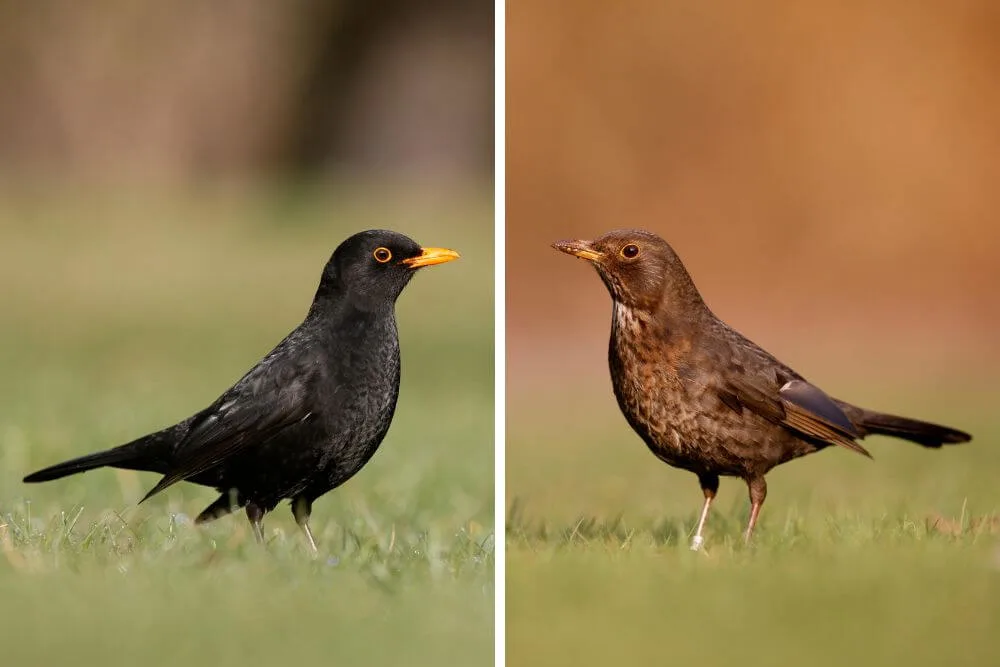
Common Name: Blackbird
Irish Name: Lon Dubh
Latin Name: Turdus merula
Conservation Status: Green
Another one of the common birds in the gardens in Ireland and Northern Ireland is the Blackbird. This species is part of the thrush family.
What do Blackbirds look like?
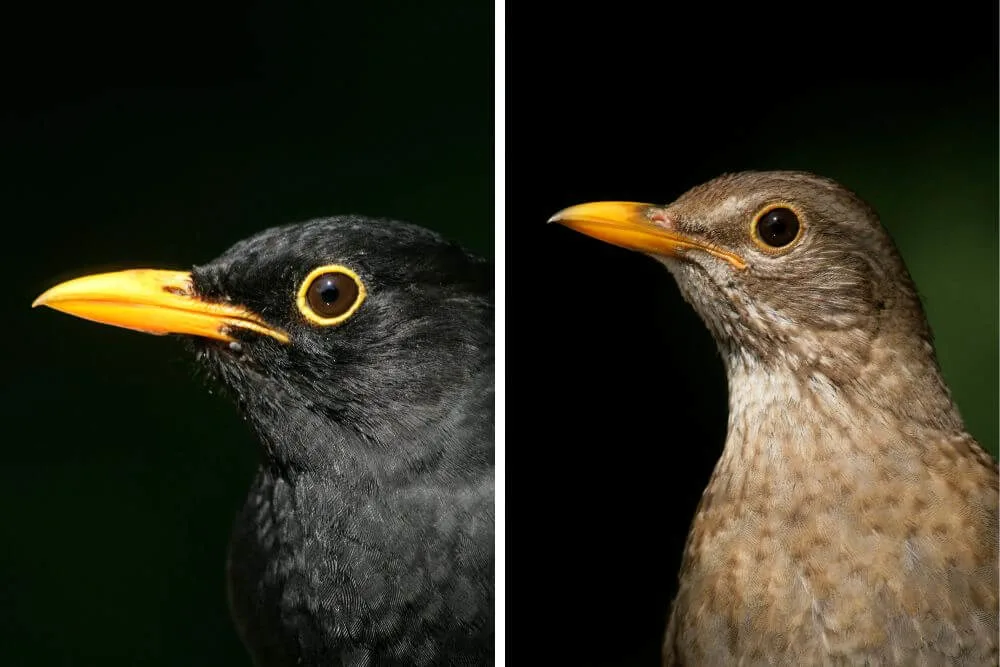
Males are black, with orange bills, orange eye-ring and black legs. Females are a dark brown in color with a speckled brown breast. The coloring of the females resembles that of a Song Thrush, but these tend to be whiter on the underside. Juveniles look similar to females.
What do Blackbirds eat?
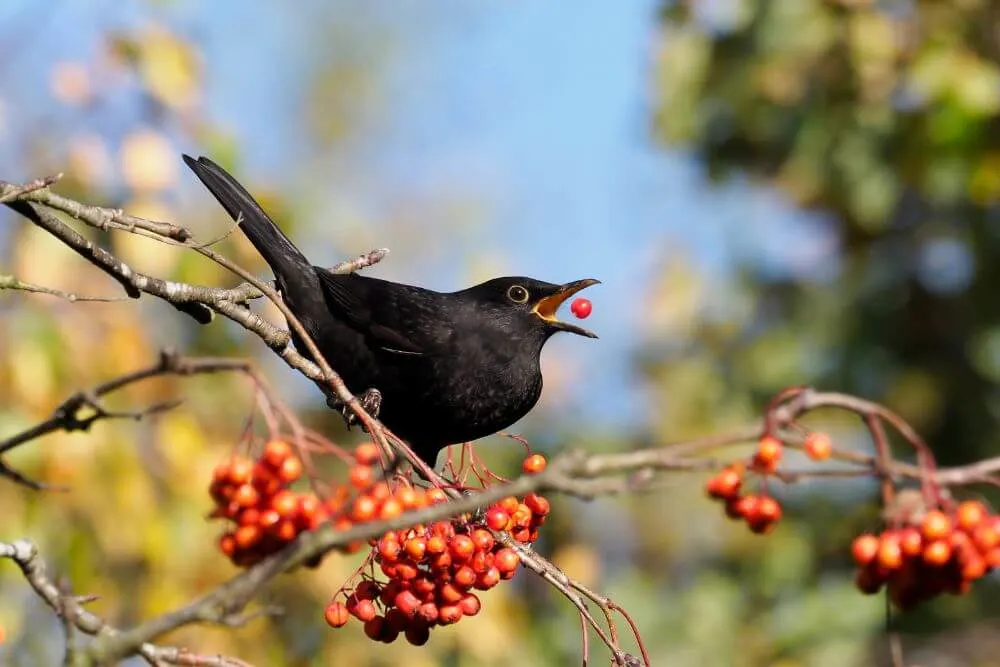
Blackbirds are omnivorous and feed on foods such as earthworms, snails, insects, berries, seeds and fruit (for example, apples and pears). They will often be seen cocking their head to one side listening for worms beneath the surface.
Do Blackbirds mate for life?
Yes, in almost all cases blackbird pairs stay together for life (they are monogamous species), or until one mate dies. In some cases where the breeding success is not that high, Blackbirds do select new partners for the next breeding season.
Where do Blackbirds nest?
Both the male and the female find a suitable location for the nest. It could be in hedgerows, trees or in ivy, but other sheltered nooks and crannies are also chosen. Blackbird nests are typically cup shaped and mud is used to bind the structure of the nest together.
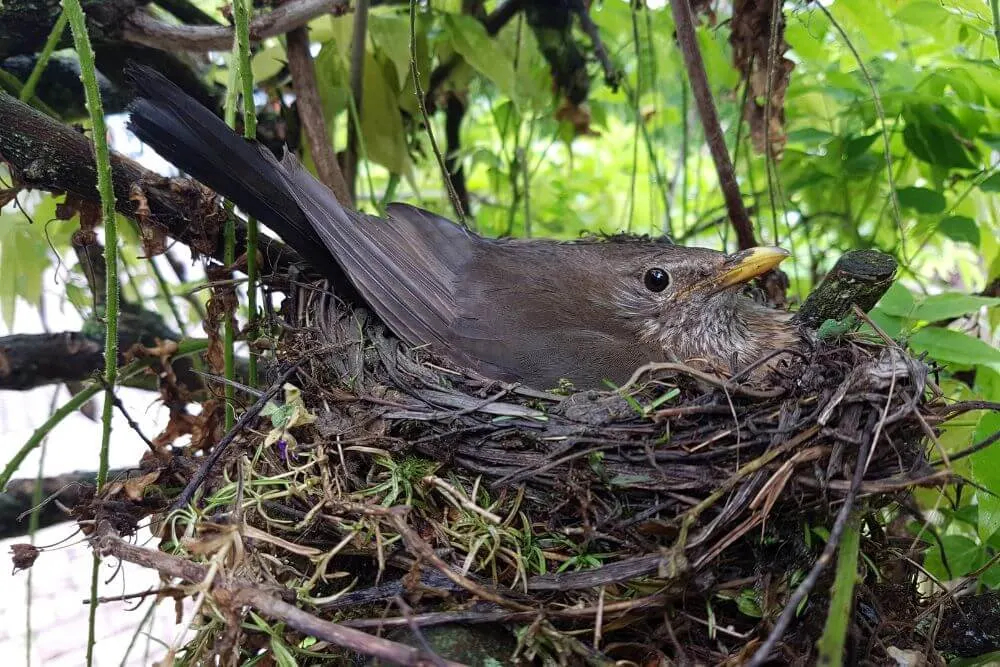
How many eggs does a Blackbird lay?
They typically rear 2-3 broods a year, each clutch containing between 3-5 eggs. Blackbird eggs are a blue-green color with a brownish speckled appearance.
How long do Blackbirds live?
The lifespan of a Blackbird in the wild is about 3 years on average. One of the oldest blackbirds ever recorded was over 21 years of age.
Blackbird Facts
- During winter, Blackbirds from Northern Europe migrate to Ireland to escape the harsher winters.
- Blackbirds were one of several species that were introduced by settlers to Australia. It is not widely established as a problem species because of its high numbers and impacts on the fruit crop.
Blue Tit Ireland
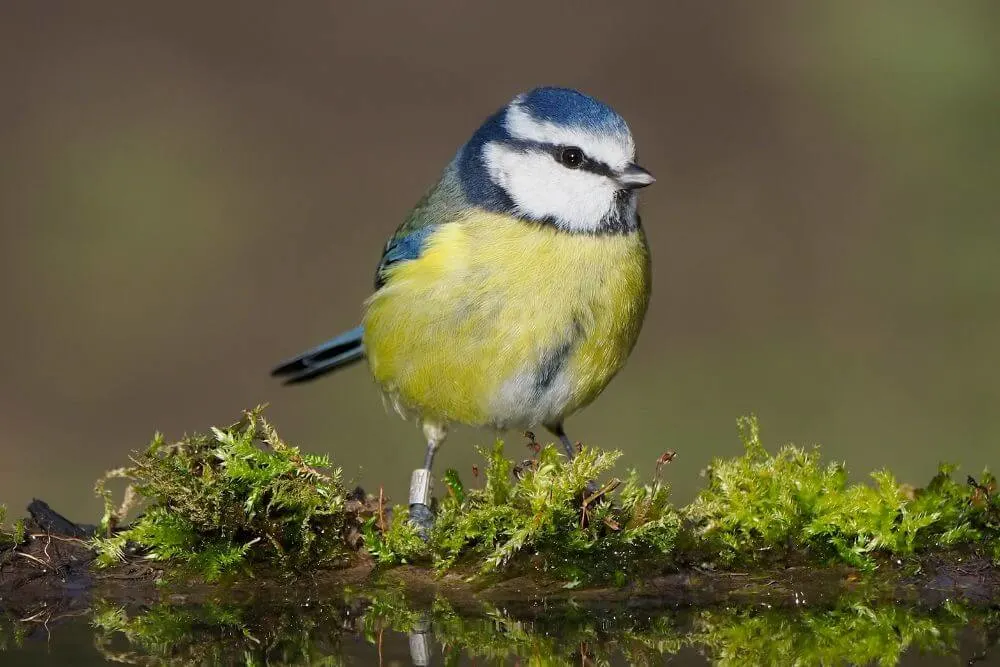
Common Name: Blue Tit
Irish Name: Meantán gorm
Latin Name: Cyanistes caeruleus
Conservation Status: Green
The Blue Tit is a very common visitor to Irish gardens, particularly in winter if there is bird food in a feeder in the vicinity. Its colorful markings make it one of the most beloved birds of the garden found in Ireland.
Blue Tits are smaller in size than a Robin and have colorful blue and yellow markings.
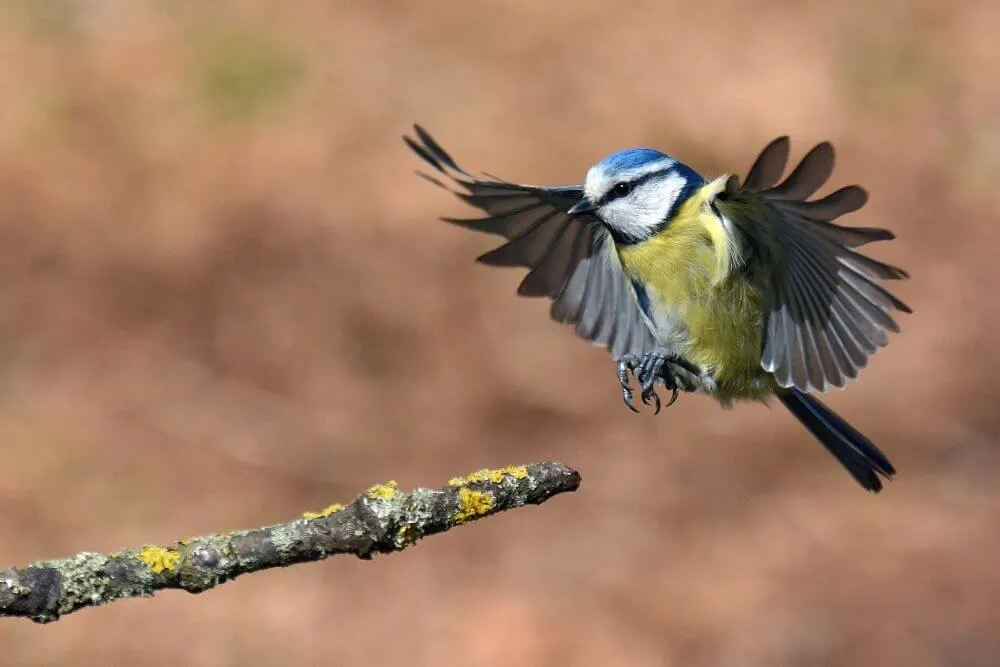
The crown of their head is blue and their cheeks are white. Black bordering around the white cheeks and there is also a black line reaching away from the eye. Underside is yellow, the back is blue-green and the wings and tail are mostly blue (but there is a small white bar on the wing).
These small birds eat a wide diet containing insects, as well as seeds, berries and smaller nuts.
Each year, Blue Tits rear only one brood, but a clutch can contain about 12 eggs (sometimes even more!)
Blue Tits live for about 3 years in the wild.
Great Tit in Ireland
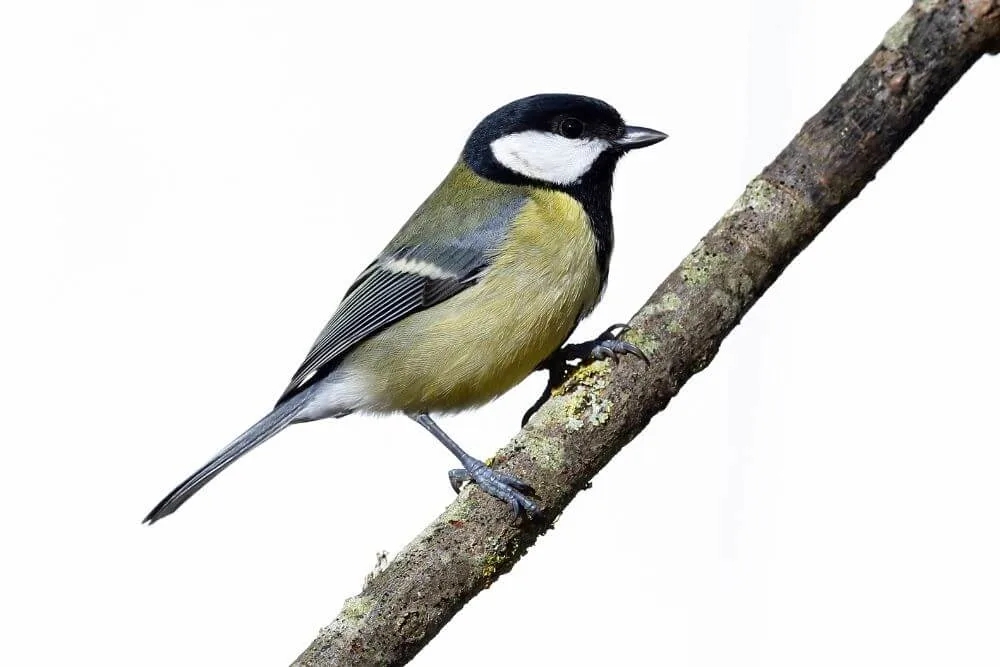
Common Name: Great Tit
Irish Name: Meantán mór
Latin Name: Parus major
Conservation Status: Green
As the largest of the tit family, the Great Tit is generally the same size as a Robin.
The head of the Great Tit is black and it has white patches on its cheeks. There is a black border around the white cheek and down its breast. Males have a broad line on their underside, while females only have a narrow one. The underside is otherwise yellow. Back and wings are green-yellow and the tail is more blue, but this coloring varies.
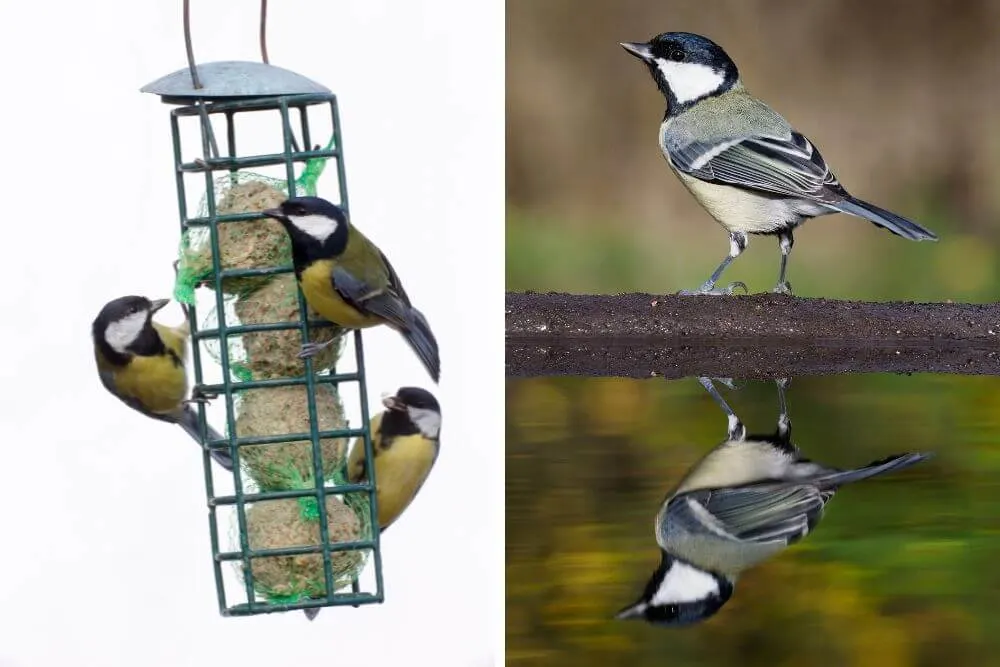
Generally the diet of the Great Tit is full of insects, seeds, nuts and berries during the autumn, but will also visit bird feeders in winter.
The Great Tit is often found in woodland areas, but is also found in gardens and parks.
One brood is reared by Great Tits each year, with typically between 7-9 eggs laid per clutch.
On average the lifespan of Great Tits is about 3 years.
Coal Tit in Ireland
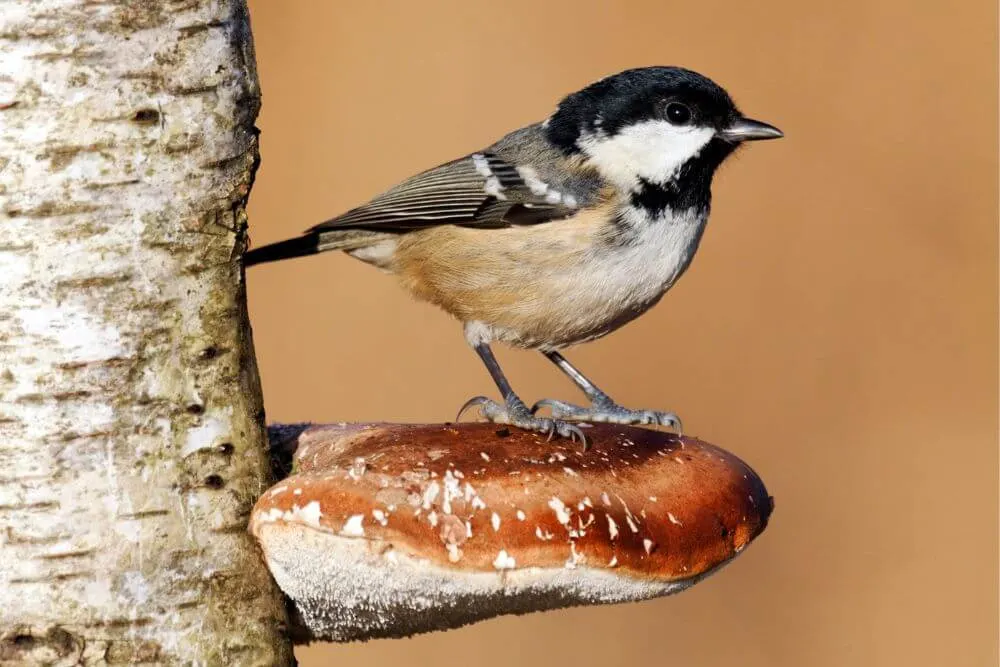
Common Name: Coal Tit
Irish Name: Meantán dubh
Latin Name: Periparus ater
Conservation Status: Green
The Coal Tit is smaller than the size of a Robin and can sometimes be confused with the Great Tit.
One of the main differences is that the Coal Tit is not as brightly colored as the Great Tit. It also has a black cap and white cheek markings, the the black band is abense from its chest. The breast feathers are a pale off white, gray color. Back and wings are dark in color and the tail is a gray-green color.
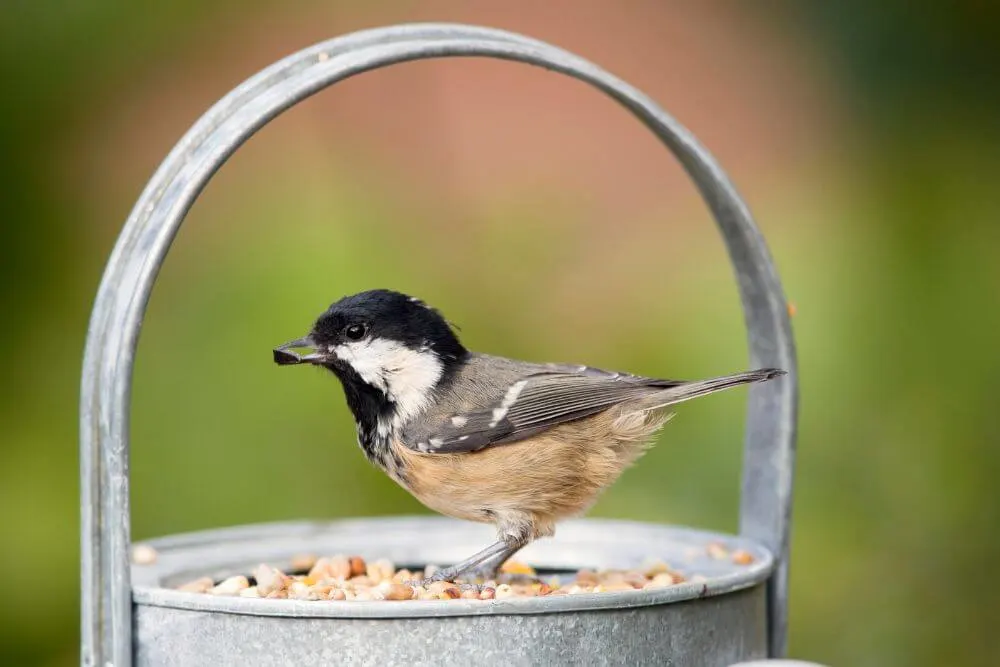
Coal Tits feed on insects, as well as seeds, and also visit bird feeders for nuts, such as peanuts.
These birds are quite at home in gardens, but typically prefer woodland areas.
One, or sometimes two broods are reared each year by the Coal Tit, with up to about 10 eggs laid per clutch.
On average, Coal Tits live for about 2 years.
Chaffinch Ireland
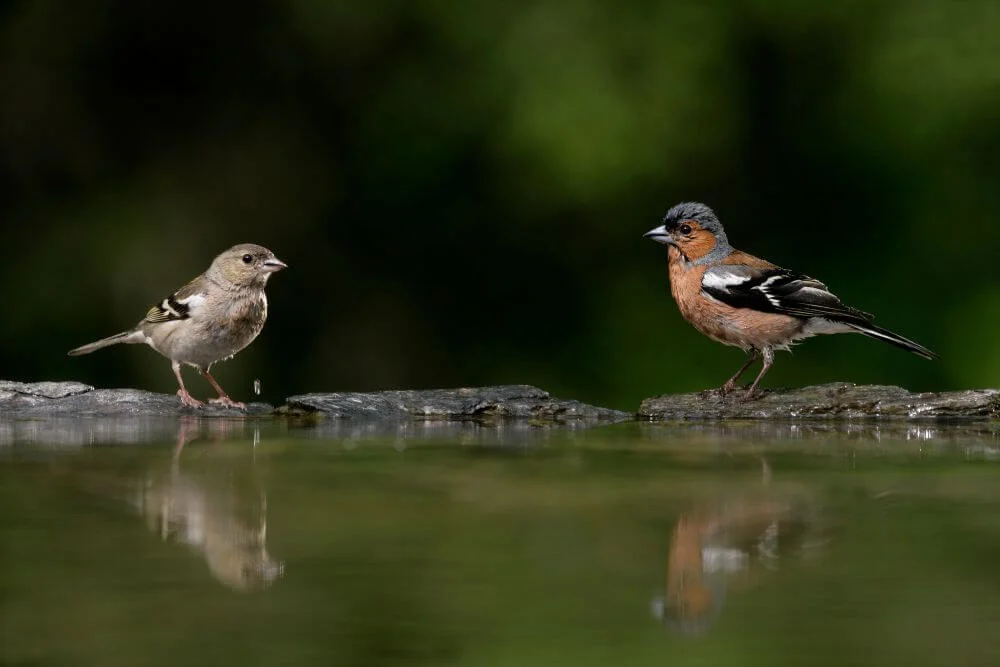
Common Name: Chaffinch
Irish Name: Rí Rua
Latin Name: Fringilla coelebs
Conservation Status: Green
This is an impressively colored garden visitor, which is a bit bigger than a Robin and is the largest and most common of all the finches.
Males have a red breast, with gray heads and wings that are black and white in color. The females are not as colorful and are gray brown in color with liker colored under pares. Back and wings are dull green with bars present on the wing.
Small nuts, such as Beech nuts, and seeds are best for the Chaffinch as their small bills that are conical in shape are not well suited to larger nuts. The chicks are fed on insects.
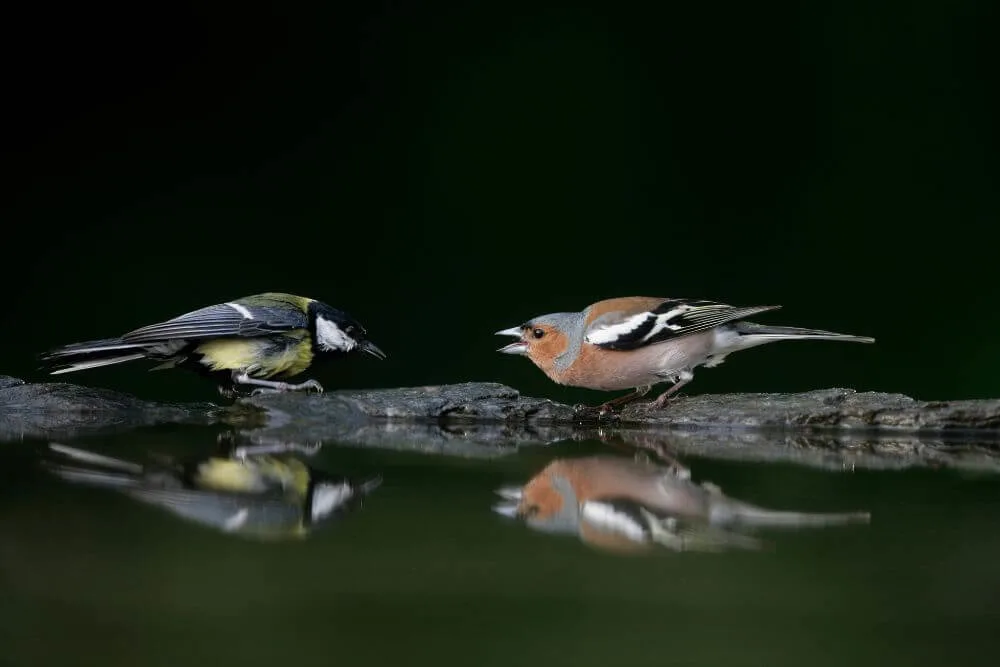
In autumn, large flocks of Chaffinches can come together and are found near Beech trees or in harvested fields. (Chaffinches from Northern Europe and the Continent also migrate to Ireland in winter. )
Chaffinches have a lifespan of about 3 years.
Goldfinch Ireland
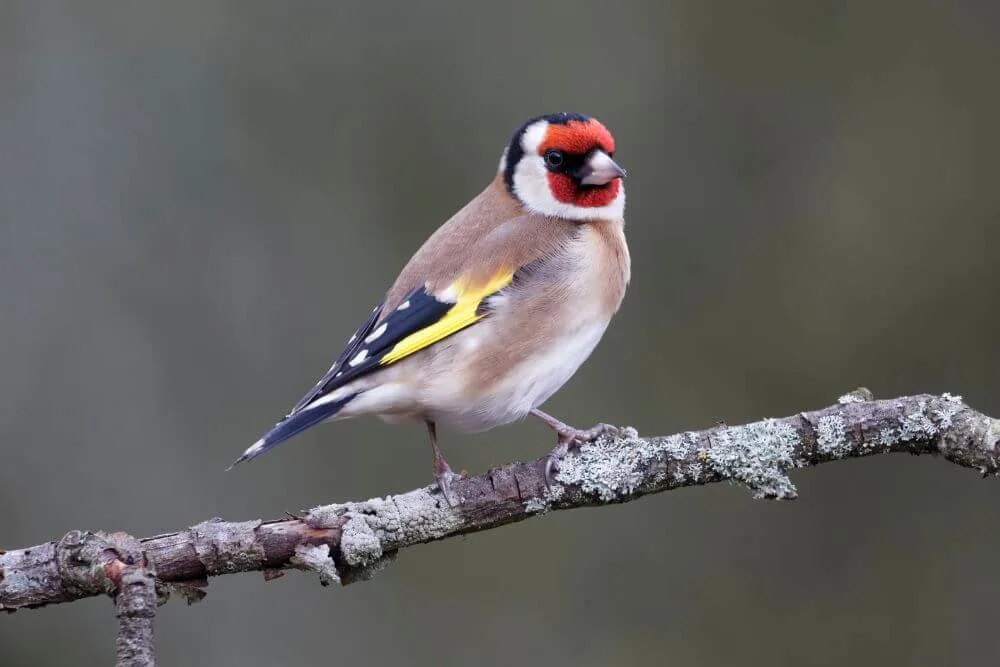
Common Name: Goldfinch
Irish Name: Lasair choille
Latin Name: Carduelis carduelis
Conservation Status: Green
European Goldfinches are brightly colored birds that are similar in size to a Robin. The distinctive markings make them easy to identify.
Goldfinches have a dark red face with white markings around and a black crown. The sides of the head also have black markings. Wings are black with white markings and bright yellow bars. The tail is also black, with some white and the black and some of the underside is a dark golden sandy color.
Males and females look very similar. Males have more red on their faces , while females have a lighter whiter underside.
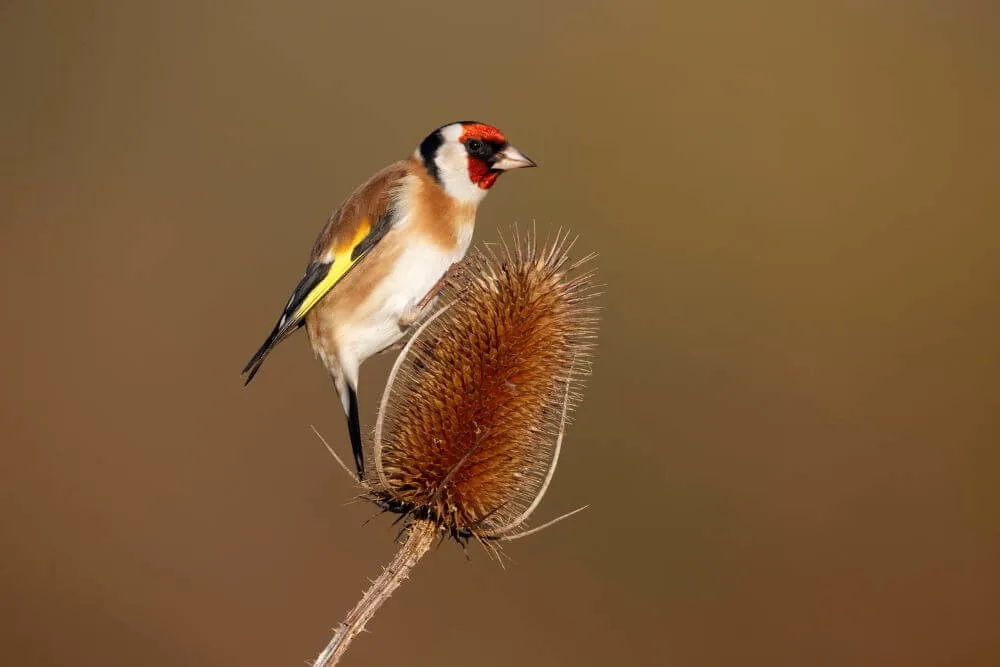
The conical bill of the Goldfinch is adapted for precision movements. One of its main food sources are the seeds from thistles which they can adeptly remove from the plants. It will also feed on grass seeds.
Goldfinches also visit bird tables and bird feeders in winter and will feed on peanuts. Interestingly, this is a relatively recent behavior which was previously not seen in this species.
Typically only one brood of chicks are reared by Goldfinches each year, occasionally two. Each clutch contains about 4-5 eggs.
Goldfinches typically have a life expectancy of about 2 years.
Pied Wagtail Ireland
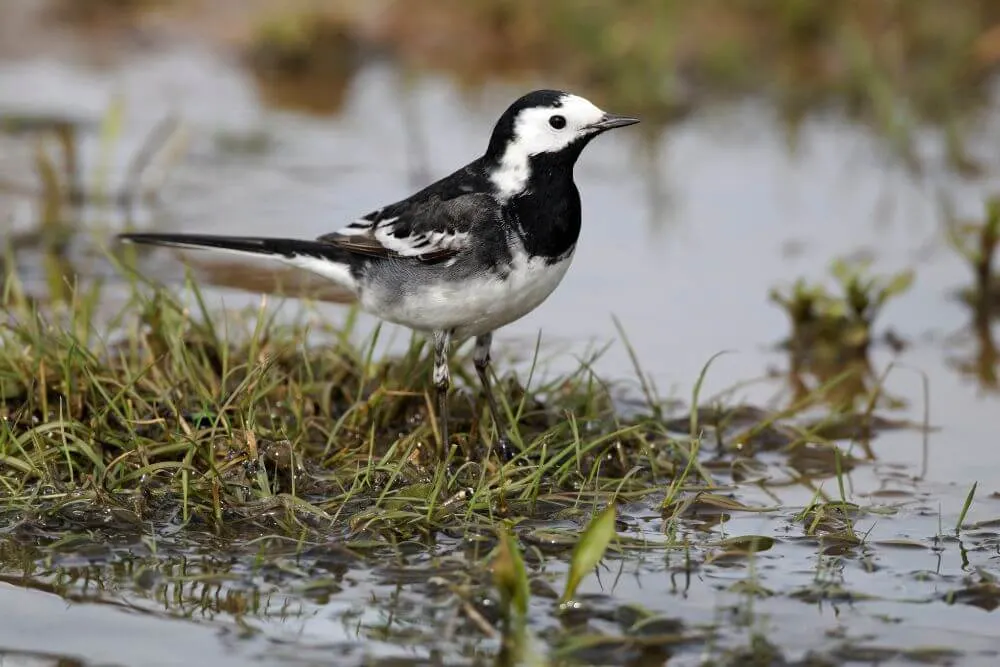
Common Name: Pied Wagtail
Irish Name: Glasóg shráide
Latin Name: Motacilla alba yarrellii
Conservation Status: Green
This lively black, white and gray bird has a long tail and is actively seen bobbing or waging its tail in one spot or dashing from one place to another.
In Ireland and Britain, the Pied Wagtail has a black throat, white markings on its head and black on the back of its head and back. The wings are a mix of black with white bars. Tails are typically gray or white on the underside and black on top.
There is considerable variation in these Wagtails. In Iceland for example, this wagtail is known as the White Wagtail and is considerably lighter in color, with more gray plumage.
Note: Although it may be confusing, the Grey Wagtail looks quite different and is not as often seen (Amber listed species – see below). It is typically found near rivers and streams in Ireland.
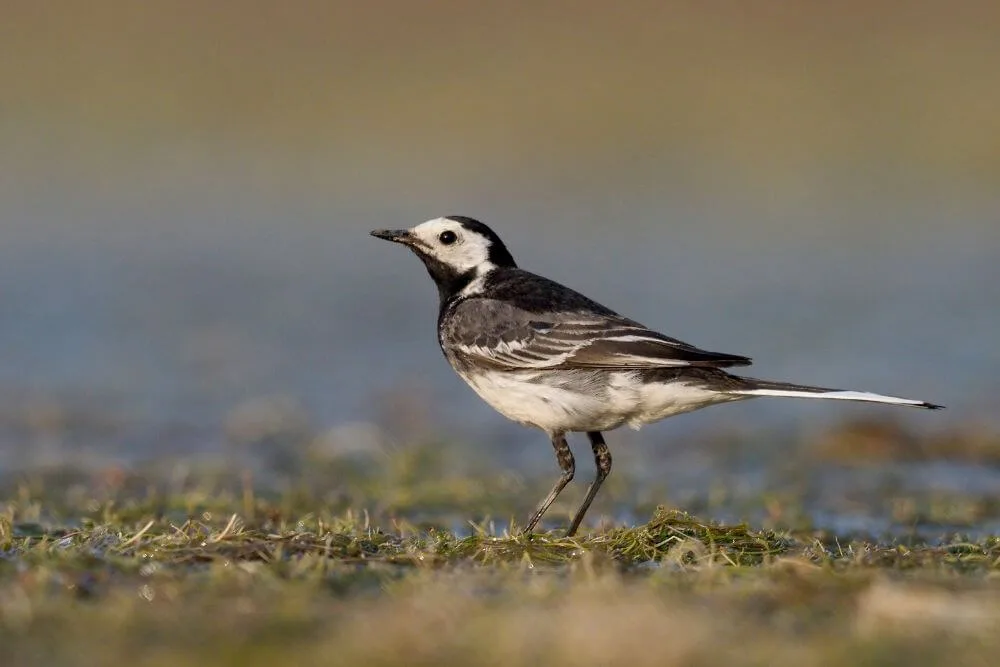
The diet of Pied Wagtails contains mostly insects and they can often be seen making small darting jumps into the air to catch low flying insects.
On average Pied Wagtails live to be about 2 years of age.
The Pied Wagtail is sometimes known as a “Lady Wagtail” or “Willy Wagtail” in Ireland.
Wren Ireland
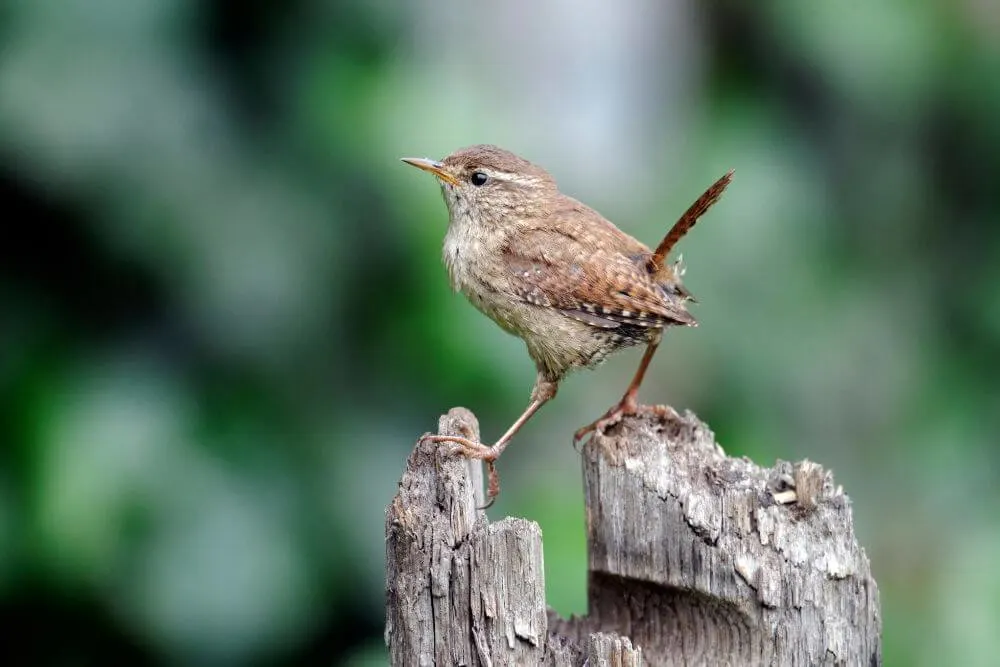
Common Name: Wren
Irish Name: Dreolín
Latin Name: Troglodytes troglodytes
Conservation Status: Green
The Wren is one of Ireland’s smallest birds. It is smaller than a Robin and is a similar size to the Blue Tit.
Wrens have red-brown plumage that is barred along the back and tail, and with some light browns and creamy gray colors. The throat is a light brown color and there is a white streak over its eye. The beak of a Wren is long and points downwards. Wrens are often seen on a branch with their tails cocked high in the air.
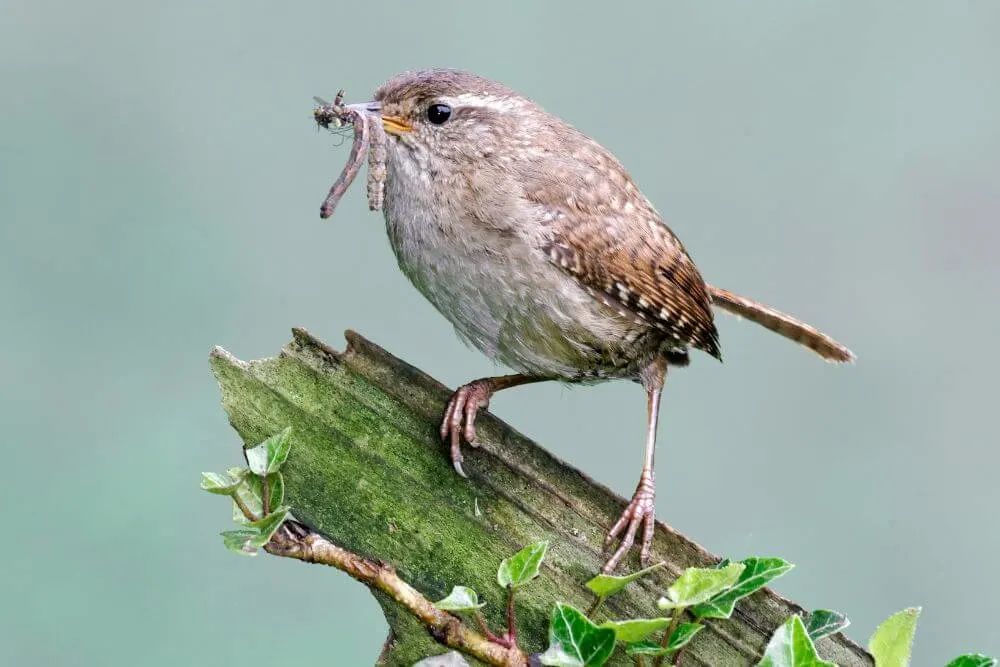
Wrens feed on a range of insects, larvae and spiders.
Wrens are typically found flitting around the undergrowth, but are found in a wide variety of habitats in Ireland.
The nest of a Wren is spherical in shape and can be found in small cavities, such as in covered vegetation like ivy or in old walls. About 5 to 7 eggs are in a clutch and they only rear one brood a year.
Due to their small body size, Wrens are particularly susceptible to cold weather. Generally they live for less than 2 years.
Tip: Find out more about the Wren, the Wren Boy Parade and the connection with St. Stephen’s Day on December 26 here.
Rare Garden Birds Ireland – Species under Threat
Data collected from the Irish Garden Birds Survey among other research has been invaluable in determining which species are now considered under threat in Ireland. Factors such as climate change, changes in land use and the intensification of agriculture can have very significant impacts on wild bird populations.
Amber Listed Bird Species in Ireland
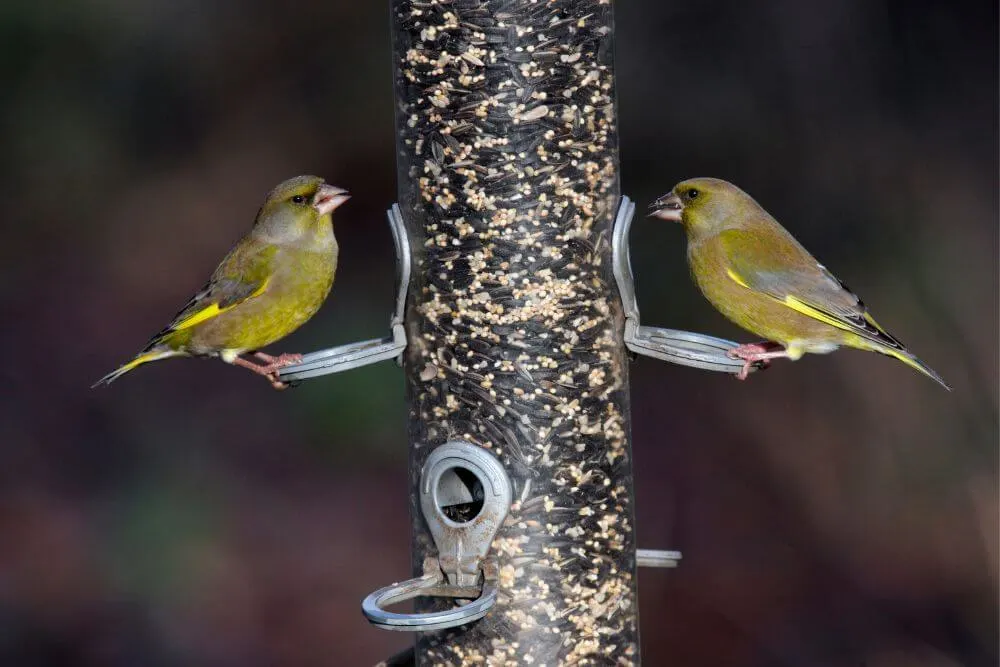
Species such as the House Sparrow (Irish Name: Gealbhan binne, Latin Name: Passer domesticus), Starlings (Irish Name: Druid, Latin Name: Sturnus vulgaris), Greenfinches (Irish Name: Glasán darach, Latin Name: Chloris chloris) were once very abundant in Ireland but there have be noticeable declines in some of the populations of these birds in gardens and other habitats.
In some cases, Irish populations of these birds are holding steady, which is the case with House Sparrow and Starlings, but populations elsewhere in Europe are negatively effected.
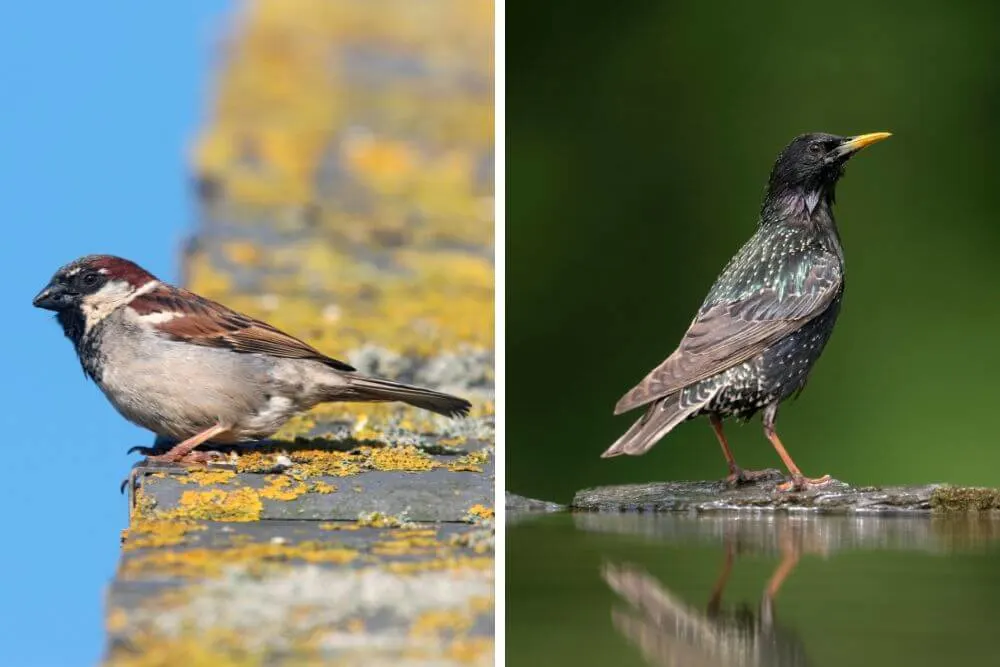
House Sparrows populations are suffering from lack of suitable habitats. This is partly caused by improved building standards that reduce nesting possibilities.
The amber conservation status of Starlings is due to changes in land use practices associated with more intensified farming practices. These changes impact the number of invertebrates in the soil, which make up a large part of the diet of Starlings.
Red Listed Bird Species in Ireland
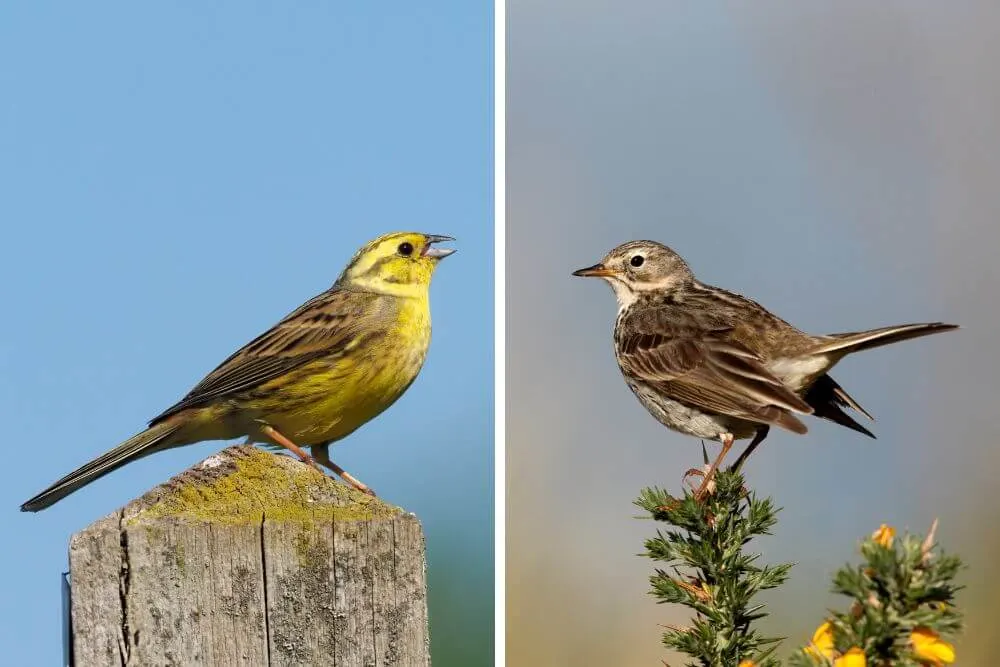
Bird species on the red list are of top concern. These include the tiny Goldcrest (Irish Name: Cíorbhuí, Latin Name: Regulus regulus), the Grey Wagtail (Irish Name: Glasóg liath, Latin Name: Motacilla cinerea), Yellowhammer (Irish Name: Buíóg, Latin Name: Emberiza citrinella), Meadow Pipit (Irish Name: Riabhóg Mhóna, Latin Name: Anthus pratensis) and the migratory Redwing (Irish Name: Deargán sneachta, Latin name: Turdus iliacus) that visit Ireland in winter from more northerly areas.
If you live in Ireland, consider taking part in the Irish Garden Bird Survey to help with garden bird identification to provide valuable data to help monitor and conserve these rare and common Irish birds.
For more information about the garden birds of Ireland (Including a poster of Irish Garden birds) and The Irish Garden Bird Survey, please check out Birdwatch Ireland.
Native Birds of Ireland
Would you like to know more about the birds native to Ireland, including birds of prey such as the Kestrel or Owls, rare Irish birds or even bird watching locations, then we have plenty more information here.

(Irish Nature Expert and Celtic Enthusiast from Ireland)
Emer Walker, founder of LetsGoIreland.com, is a Cork native with profound expertise in Irish nature and ecology. Holding a PhD in Restoration Ecology and backed by extensive research in ecological sciences, she’s delved deep into Ireland’s natural wonders, from its rugged landscapes to its serene beaches. Emer’s passion also encompasses Celtic art and traditions. As a true authority on Ireland’s natural and cultural heritage, she invites readers through LetsGoIreland.com to immerse themselves in the authentic Irish experience.
